Smart Materials and Technologies for Early Warning, Monitoring, and Increased Expected Life of Transportation Infrastructure
Abstract
Different approaches can be used to make cities and transportation infrastructures smarter, more sustainable, and durable. These changes will positively affect the work of many stakeholders, such as authorities, road agencies, citizens, users, and driverless vehicles. Unfortunately, despite the fact that smart materials are becoming more and more common, the integration level between smart materials and early warning technologies is still in need of a holistic approach.
In light of this, the main objective of the work presented in this paper is to provide an overview of the materials and technological solutions that can be used in the field of transportation infrastructures to satisfy some of the Sustainable Development Goals of the United Nation (resolution A/RES/70/1/2015).
The solutions above include an innovative monitoring method, set up by the authors of this paper, which is based on the concept of vibro-acoustic signature. The method mentioned above is a Non-Destructive Test and sensor-based solutions in order to detect damage to road pavements. The proposed method was validated using Finite Element Modelling simulations, and experimental investigations followed by data analysis carried out using Machine Learning- and Wavelet-based algorithms.
Results show that smart materials and technologies can be used to target A/RES/70/1/2015 goals and to improve the sustainability of the current and future transportation infrastructures.
Materiali e tecnologie intelligenti per allerta, monitoraggio, e per aumentare la vita utile delle infrastrutture di trasporto
Differenti approcci possono essere utilizzati per rendere le città e le infrastrutture di trasporto più intelligenti, sostenibili e durature. Queste tendenze influenzeranno positivamente il lavoro di molti portatori di interesse come ad esempio le autorità competenti, le società che si occupano di strade, i cittadini, gli utenti, ed i veicoli senza guidatore. Sfortunatamente, malgrado il fatto che i materiali intelligenti sono sempre più utilizzati, il livello di integrazione tra materiali intelligenti e tecnologie per l’allerta precoce ha ancora bisogno di un approccio olistico.
Alla luce di questo, l’obiettivo principale del lavoro presentato in questo documento è quello di fornire una panoramica su soluzioni basate su materiali e tecnologie che potrebbero essere utilizzate nel campo delle infrastrutture di trasporto per soddisfare alcuni degli obiettivi della risoluzione per lo sviluppo sostenibile (Sustainable Development Goals) delle Nazioni Unite (A/RES/70/1/2015).
Le soluzioni su citate includono un metodo innovativo, messo a punto dagli autori della memoria, il quale è basato sul concetto di firma vibro-acustica. Il metodo su citato è una soluzione basata su test non distruttivi (NDT) e sensori per l’identificazione di danni nelle pavimentazioni stradali. Il metodo proposto è stato validato attraverso simulazioni fatte con un modello agli elementi finiti (FEM), e indagini sperimentali seguite da un’analisi dati svolta usando un modello basato sull’apprendimento automatico (machine learning).
I risultati mostrano che materiali e tecnologie intelligenti possono essere utilizzate per raggiungere gli obiettivi della risoluzione A/RES/70/1/2015 e migliorare la sostenibilità delle attuali e future pavimentazioni stradali.
Parole chiave
Full Text
PDF (English)DOI: https://doi.org/10.14633/AHR197
Refback
- Non ci sono refbacks, per ora.
Copyright (c) 2019 Filippo Giammaria Praticò; Rosario Fedele

This work is licensed under a Creative Commons Attribution-NonCommercial 4.0 International License.
........................................................................................................................................................................................................................................................................................................................................................
ArcHistoR è una rivista open access e peer reviewed (double blind), di Storia dell’architettura e Restauro, pubblicata dall’Università Mediterranea di Reggio Calabria con cadenza semestrale.
ISSN 2384-8898
![]()

Comitato scientifico internazionale
Maria Dolores Antigüedad del Castillo-Olivares, Monica Butzek, Jean-François Cabestan, Alicia Cámara Muñoz, David Friedman, Alexandre Gady, Jörg Garms, Miles Glenndinning, Mark Wilson Jones, Loughlin Kealy, Paulo Lourenço, David Marshall, Werner Oechslin, José Luis Sancho, Dmitrij O. Švidkovskij
Comitato direttivo
Tommaso Manfredi (direttore responsabile), Giuseppina Scamardì (direttrice editoriale), Antonello Alici, Salvatore Di Liello, Fabrizio Di Marco, Paolo Faccio, Mariacristina Giambruno, Bruno Mussari, Annunziata Maria Oteri, Francesca Passalacqua, Edoardo Piccoli, Renata Prescia, Nino Sulfaro, Fabio Todesco, Guglielmo Villa
 .
. 


2.jpg)
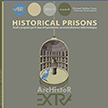
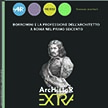
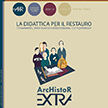
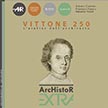
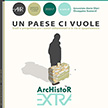
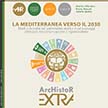
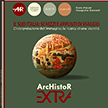
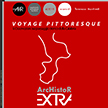
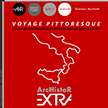
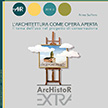
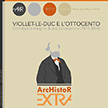
_2.jpg) .
. 
 .
. 

